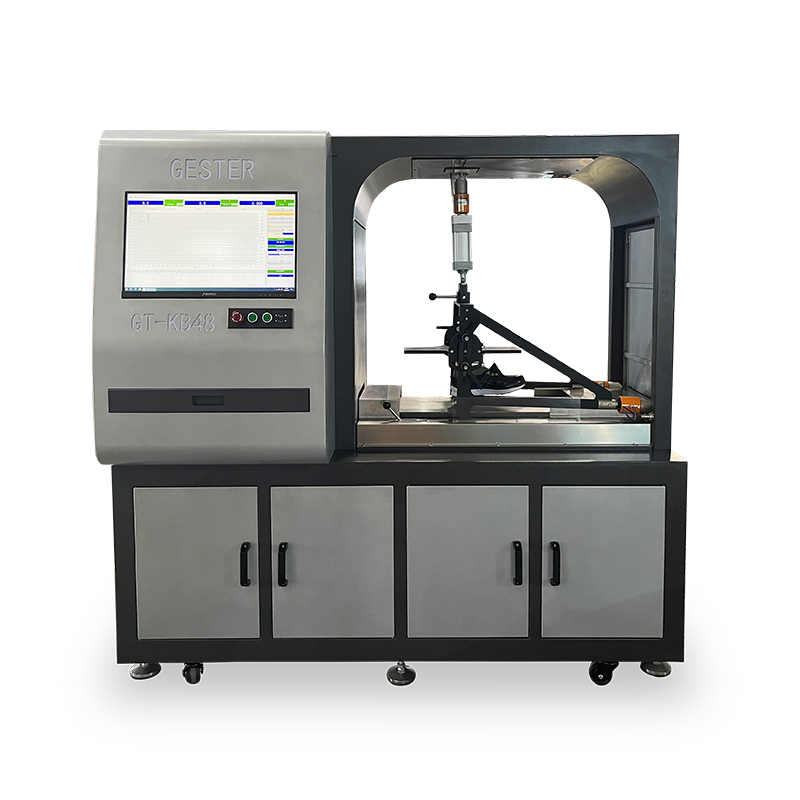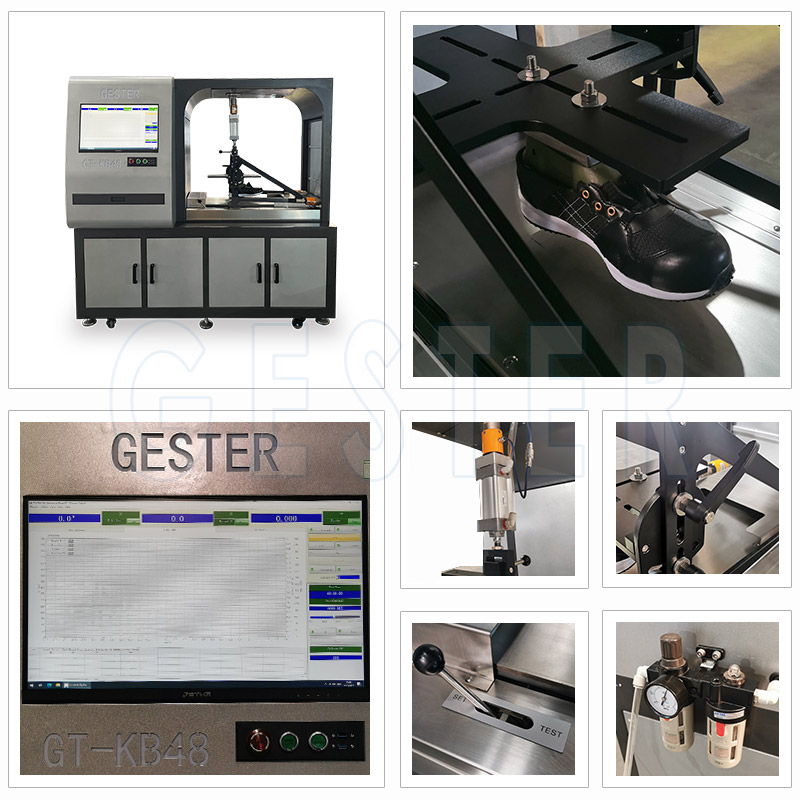How Important is Slip Resistance Testing?
Table of Contents
|
I. Introduction
II. Basics of Slip Resistance Testing
III. The Role of Slip Resistance Testers
IV. Why Slip Resistance Testing Matters
V. Conclusion
|
I. Introduction
Slip resistance testing is a crucial evaluation process employed in the footwear industry to assess the coefficient of friction between the sole of a shoe and various surfaces. Essentially, it measures how effectively a shoe can maintain traction on different terrains, addressing the fundamental concern of preventing slips and falls. By evaluating the slip resistance of shoes, manufacturers and consumers can make informed decisions about the suitability of footwear for specific environments.
In the following sections, we will delve deeper into the basics of slip resistance testing, exploring its objectives, the science behind coefficient of friction, and the role of advanced tools like the Shoe Slip Resistance Tester GT-KB48 in this critical evaluation process.
II. Basics of Slip Resistance Testing
A. Purpose and Objectives
Slip resistance testing serves a fundamental purpose in evaluating the safety and reliability of footwear. The primary objective is to measure the coefficient of friction between the sole of a shoe and various surfaces, providing quantitative data on the shoe's traction capabilities. This data, in turn, helps manufacturers, retailers, and consumers make informed decisions about the suitability of footwear for specific applications.
The overarching goal is accident prevention. By understanding how well a shoe grips different surfaces, it becomes possible to identify potential hazards and mitigate the risk of slips and falls. The purpose, therefore, is not merely to meet regulatory standards but to enhance user safety in real-world scenarios.
B. Coefficient of Friction Explained
At the heart of slip resistance testing lies the concept of the coefficient of friction. This coefficient quantifies the level of resistance between the sole of a shoe and the surface it contacts. A higher coefficient indicates better traction, meaning the shoe is less likely to slip.
It's important to note that different environments require different levels of slip resistance. A shoe designed for a construction site, for example, might need a higher coefficient of friction than a shoe intended for an office setting. Slip resistance testing considers these nuances to ensure that footwear is optimized for its intended use.
III. The Role of Slip Resistance Testers
In the realm of slip resistance testing, the Slip Resistance Tester For Shoes advanced testing apparatus is instrumental in determining the slip resistance of footwear by applying a predetermined load on diverse surfaces, including wood, PVC, and ceramic tiles. Its multifaceted approach involves measuring the sole friction coefficient, a key parameter in assessing a shoe's grip.
The Slip Resistance Tester For Shoes distinguishes itself through its adherence to stringent international standards, including ISO 13287, GB/T 28287, ASTM F2913, SATRA TM 144, ISO 24267, ISO 20344, JIS T8101, JIS T8106, and JIS T8107. By aligning with these standards, the Slip Resistance Testing Machine ensures that slip resistance testing is not only accurate but also universally recognized, fostering consistency in evaluating footwear safety.

IV. Why Slip Resistance Testing Matters
A. Preventing Accidents and Injuries
One of the primary motivations behind slip resistance testing is the critical role it plays in preventing accidents and injuries. Slip and fall incidents are not only common but also a leading cause of injuries in various settings. The significance of slip resistance testing lies in its ability to assess how well a shoe can maintain traction on different surfaces, thereby reducing the risk of accidents.
Accurate slip resistance testing, such as that conducted by the Slip Resistance Testing Machine, provides valuable insights into a shoe's performance under real-world conditions. By identifying potential slip hazards, manufacturers can take corrective measures to enhance the safety of their footwear, ultimately contributing to a significant reduction in accidents and injuries.
B. Legal Compliance and Standards Adherence
The importance of slip resistance testing extends beyond individual safety to adherence to international standards. Footwear manufacturers are obligated to meet specific safety standards to ensure the well-being of consumers. Slip resistance testing, especially when conducted with a tool like the Shoe Slip Resistance Tester, aligns with international standards such as ISO 13287, GB/T 28287, ASTM F2913, and others.
C. Impact on Brand Reputation and Consumer Trust
In an era where consumers prioritize safety, slip resistance testing has a profound impact on brand reputation and consumer trust. A brand that invests in comprehensive testing, exemplified by the use of advanced tools like the Shoe Slip Resistance Tester, communicates a commitment to producing reliable and safe footwear.
Positive results from slip resistance testing become a tool, instilling confidence in consumers. Knowing that a brand values safety and invests in rigorous testing enhances consumer trust and loyalty. Conversely, a lack of emphasis on slip resistance can lead to reputational damage and a loss of consumer confidence.
D. Customization for Different Environments
Footwear is designed for diverse environments, and slip resistance requirements vary accordingly. An essential aspect of slip resistance testing is its role in customization for different environments. The Slip Resistance Tester For Shoes, by allowing testing on various surfaces, facilitates the tailoring of footwear to specific conditions.
Whether it's a construction site, a hospital floor, or a wet outdoor environment, slip resistance testing enables manufacturers to create footwear that meets the unique challenges of each setting. This customization ensures that individuals can rely on their footwear to provide optimal safety and performance, regardless of the environment they navigate.
V. Conclusion
In conclusion, slip resistance testing, epitomized by the advanced Shoe Slip Resistance Tester GT-KB48, stands as a linchpin in footwear safety. By preventing accidents, ensuring standars, enhancing brand reputation, and customizing for diverse environments, this testing is not a mere formality but a commitment to user well-being. As we recognizing slip resistance testing pivotal role in fostering a safer, more secure foundation for every step we take.


